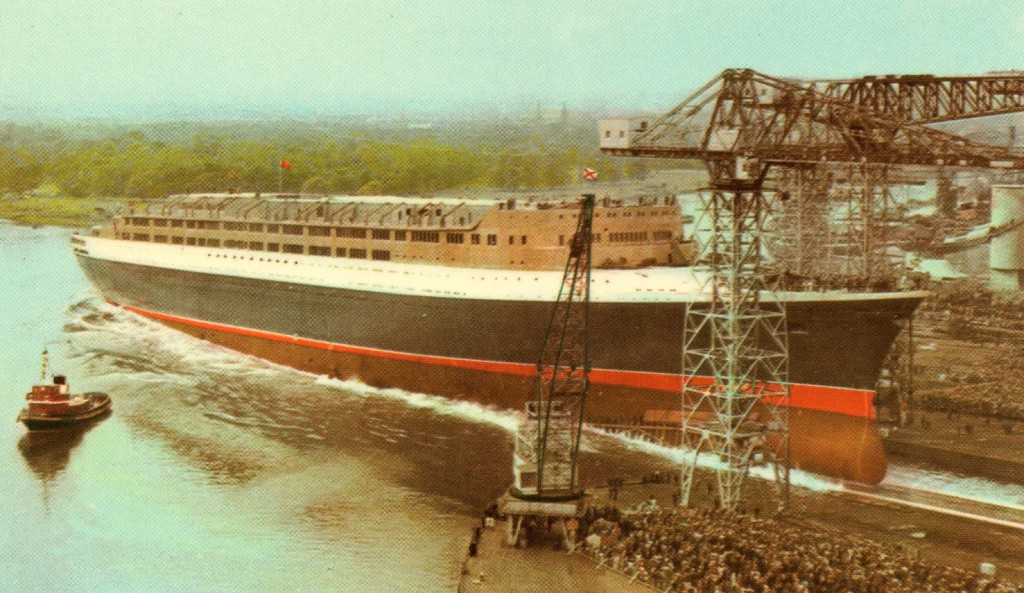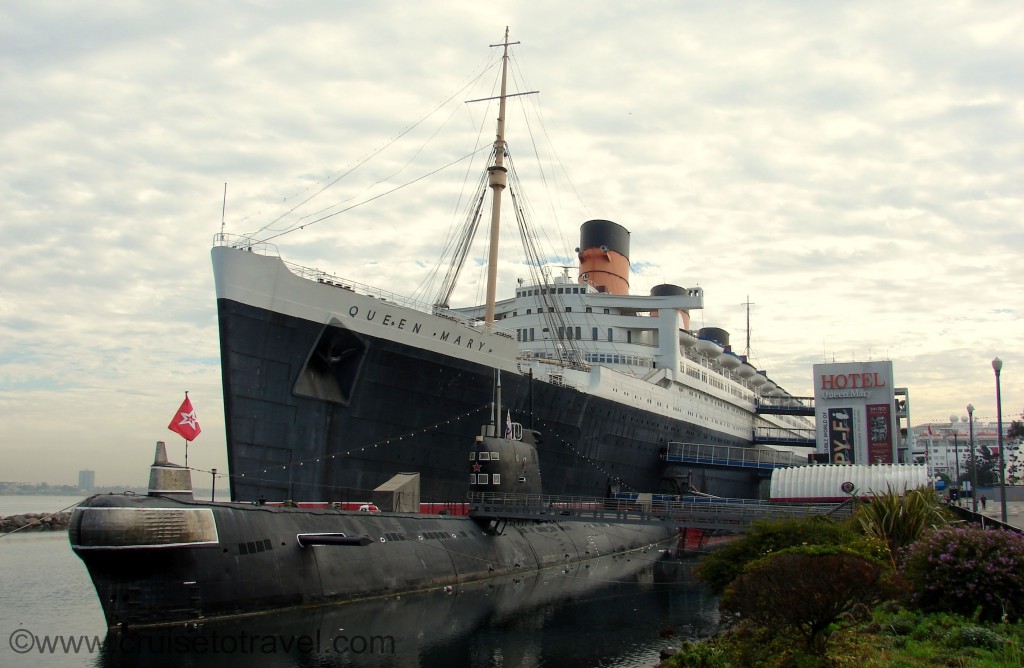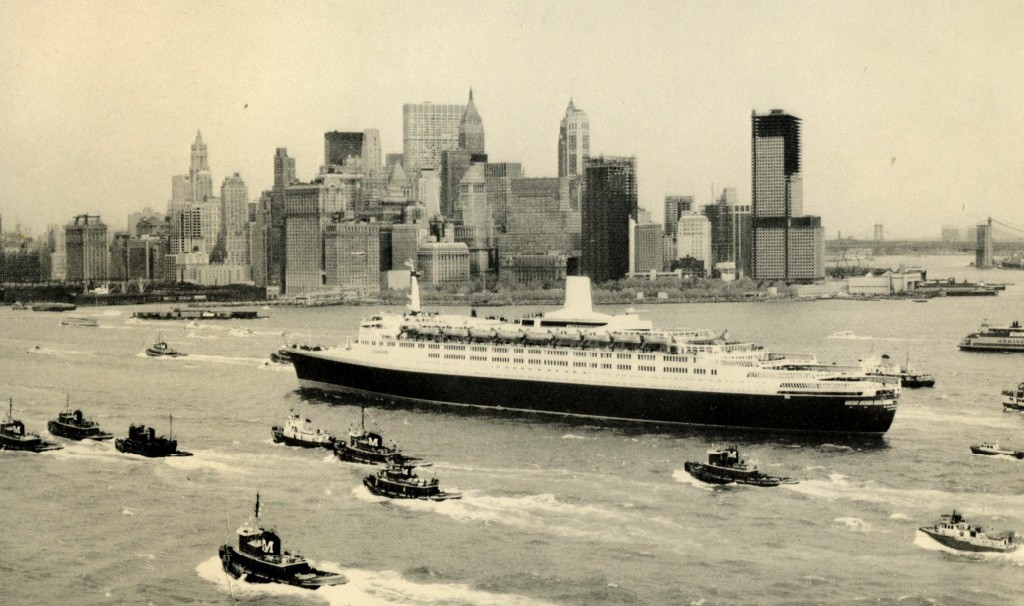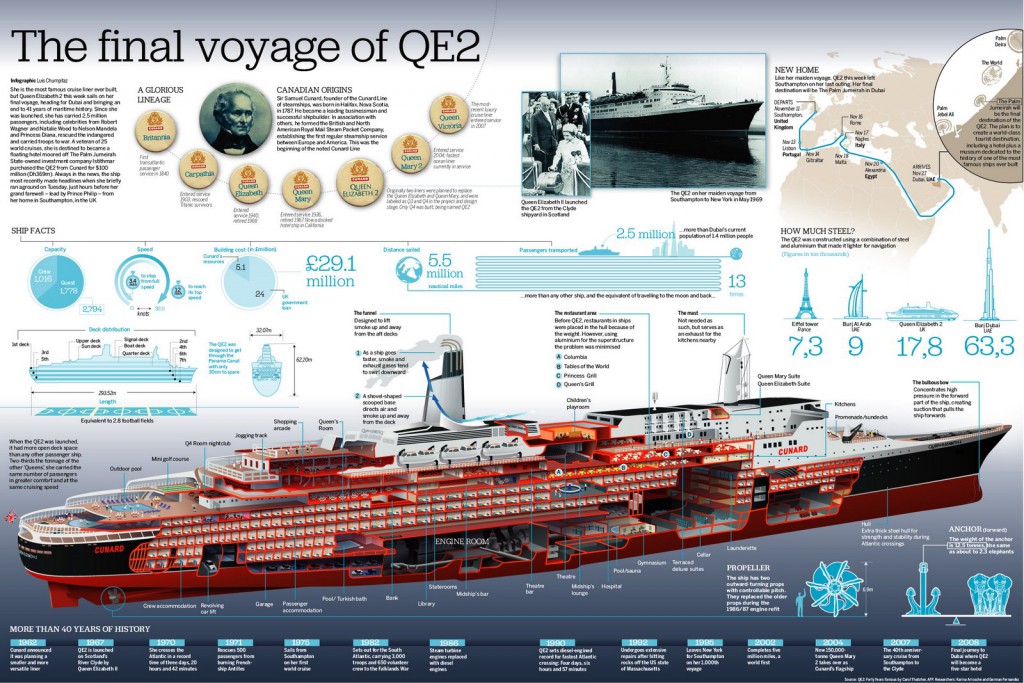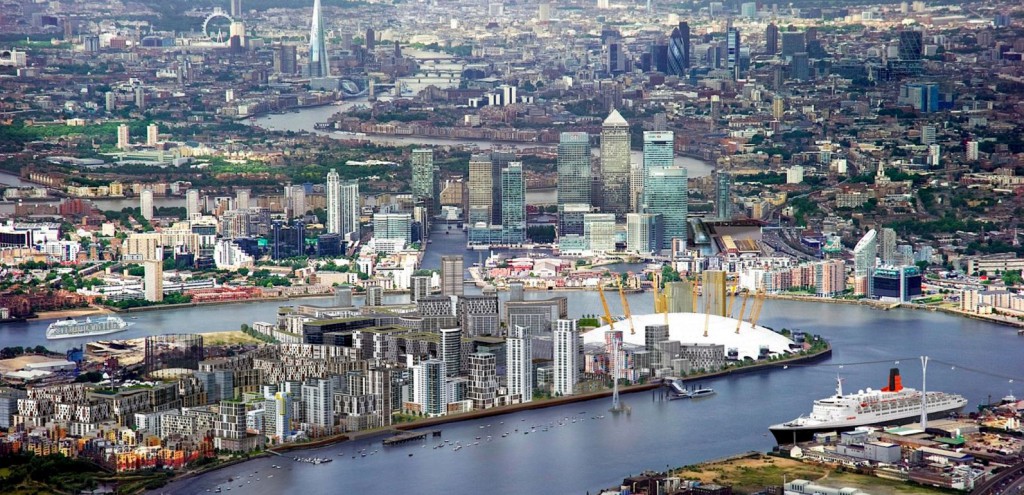”I name this ship Queen Elizabeth the second. May God bless her and all who sail in her” were the exact words used by Queen Elizabeth II to officially launch the ship on 20 September 1967.
She was built to replace the old Queen Mary and Queen Elizabeth as the modern version of an oceanliner capable to compete with the new generation of cruise ships. Queen Mary was sold and now serves as a tourist attraction featuring restaurants, a museum and hotel. The ship is listed as a historic place and is one of the ‘Historic Hotels of America’. The Queen Elizabeth, while undergoing refurbishment in 1972, caught fire and was eventually scrapped.
On 2 May 1969 QE2 left Southampton for her maiden transatlantic voyage to New York, a trip that took her 4 days 16 hours and 35 minutes.
During summer she sailed transatlantic voyages, in winter warm weather cruises.
In 1982 QE2 played an important role in the Falklands War transporting 3000 troops of the Fifth Infantry Brigade to the South Atlantic. For this fuel pipes allowing refuelling at sea and 2 helicopter pads were installed. Public lounges were transformed into dormitories and carpets were covered with hardboard. The ship was reinforced with steel plating and an anti-magnetic coil was fitted to combat naval mine.
Between 1982 and 1983 QE2 was painted a light pebble grey, a colour which proved unpopular with passengers and difficult to maintain.
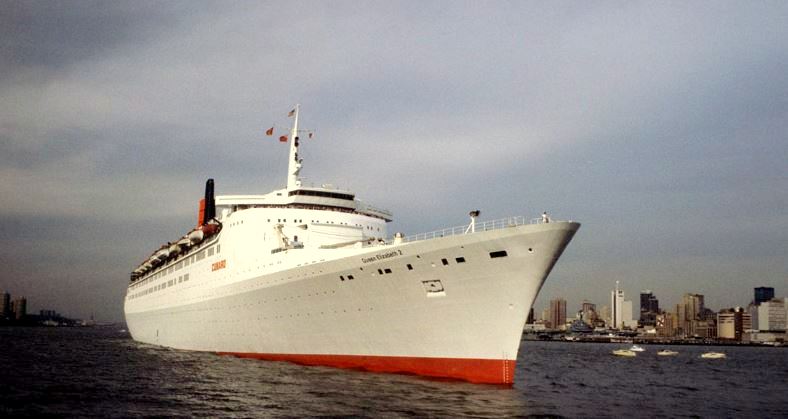
In 2004 QE2 stopped offering the traditional transatlantic crossings and began a full-time life as cruise ship sailing out of Southampton. The transatlantic route has since then been serviced by Cunard’s new flagship Queen Mary 2.
On 18 June 2007 cunard announced the retirement of her former flagship. after nearly 40 years of service QE2 had sailes close to 6 million miles, completed 806 transatlantic crossings and carried 2.5 million passengers.
Queen Elizabeth 2 left her homeport of Southampton for the final time on 11 November 2008 and arrived in Dubai on 26 November. Her new owners, the Dubai investment company Istithmar, unveiled plans to transform her into a floating luxury hotel alongside the Palm Jumeirah, the artificially built island off the coast of Dubai, forming the centrepiece of a luxurious marina complex. Unfortunately the financial crisis stopped these plans.
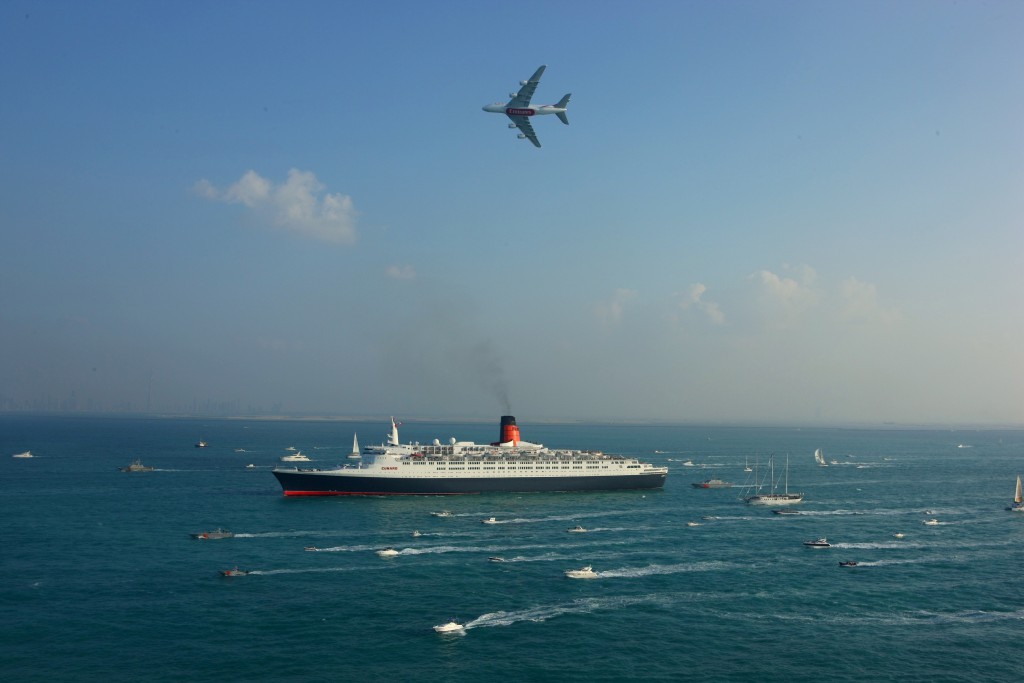
Though there have been plenty of rumours and speculations over the past years about the future of QE2 she remains docked in Port Rashid. Options include having QE2 sent back to the UK, where Glasgow, Liverpool, Southampton and London are all in the running to become her future home. While the first 3 all claim to be the spiritual home of QE2, the London QE2 project, which would transform the ship into a hotel and entertainment centre on the Thames near the O2 Arena, has come closest to bringing her back from Dubai.
One of the latest rumours insinuate that she will be sent to Hong Kong or Singapore to serve as a floating hotel, shopping mall and museum. With the increasing popularity and growing interest in cruising in Asia this could very well be a realistic option.
Though the ship has been maintained in a seaworthy condition and generated her own power until the engines were turned off in 2013, nowadays she is suffering from mould thanks to the hot and humid conditions in Dubai. According to recent reports the former ocean liner while looking in good condition, with most of the ships’ interior intact, “she is rotting from the inside out”.
Cunard’s 175th anniversary and the 50th anniversary of the keel laying on 5 July form a great opportunity to raise awareness about the situation the former Cunard flagship is in. Not only is QE2 the last British passenger ship built in the UK, she is one of the best known and iconic ships in the world and considered a national treasure by many.
Nevertheless the question remains should QE2 be saved or sent to the scrap yard? Sure it will not be an easy task bringing the ship to a new home, and yes it will be an expensive operation to have her converted into a hotel/entertainment centre/museum. But isn’t it time we started preserving more of our maritime heritage as part of our world heritage?
